Andrew Petrie Cattanach is yet another notable Scottish Freemason from the past, who chose to pursue his spiritual interests outside the boundaries of Freemasonry.
And like many of his contemporaries, proceeded further into the realms of the occult by enlisting in societies such as the Theosophical Society, and the Hermetic Order of the Golden Dawn.
Cattanach was born on 16 June 1856, at Perth, Scotland, to Charles Cattanach and Euphemia Petrie.
Little is known about his early life in Perthshire, but at some point in his life he moved to Edinburgh.
On 17 May, 1882, he was initiated into Lodge Canongate Kilwinning No. 2, Edinburgh. He was Passed on 31 May, and Raised on 14 June of that same year.
At the time of his initiation into the Craft he is described as a stationer. He later became secretary of the Lodge.
In December, 1893, he sought further light by joining the Hermetic Order of the Golden Dawn; joining the Amen-Ra Temple No. 6, in Edinburgh, where he assumed the Latin Motto Esto Sol Testis, meaning ‘Let the Sun be your Witness’.
At that time, he was residing at 67, Brunswick Street in the city.
Cattanach was also a keen student of theosophy and was a member of the Scottish lodge of that society, the president of which was the ubiquitous Dr George Dickson, and whose secretary was the equally so, John William Brodie-Innes, both of whom were fellow members of the Golden Dawn.
For a time, he helped edit the Transactions of the Scottish Lodge, but he found the Lodge rather too elitist, and he founded a lodge in Edinburgh which was more accessible to ordinary people.

Albert E. S. Smythe, 1919
IMAGE LINKED: wikimedia Attribution 4.0 International (CC BY 4.0)
The Irish-Canadian theosophist Albert E. S. Smythe was a great friend of Cattanach since they met whilst working with Messrs. Cowan and Company, Papermakers in Edinburgh.
Cattanach was already secretary of Lodge Canongate Kilwinning Lodge No. 2 when they first met, but Smythe helped foster Cattanach’s interest in all things spiritual and esoteric.
He recommended various books on the subject, including those by eminent theosophist Madame Blavatsky; and Cattanach considered theosophy complementary to, and a legitimate and worthwhile adjunct to his Masonic activities.
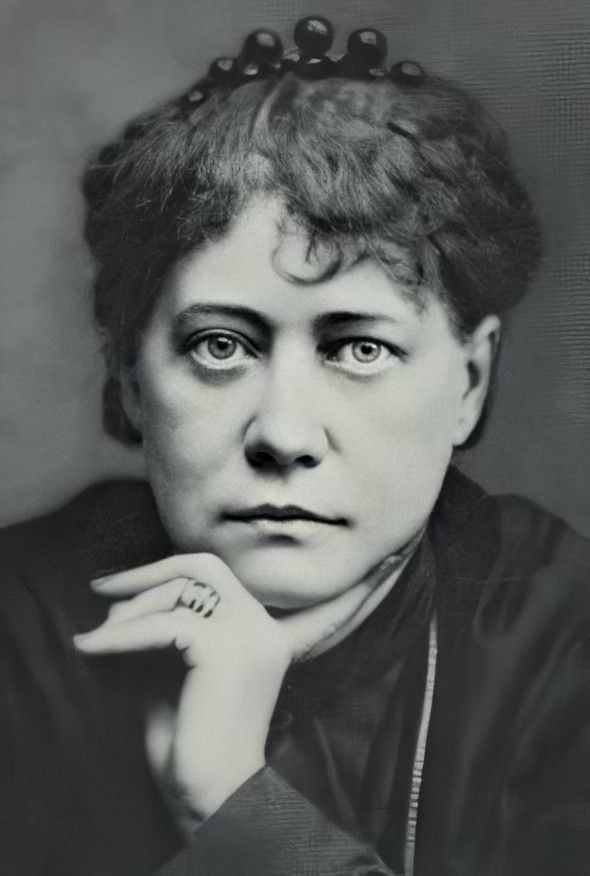
Founder of the Theosophical Society Elena Petrovna Gan (HP Blavatsky), born in Russia 1831 – died in England 1891
IMAGE LINKED: wikimedia Attribution 4.0 International (CC BY 4.0)
Smythe eventually emigrated to Canada, but Cattanach pursued his various esoteric interests to the full extent, and the pair remained in close contact, Cattanach occasionally contributing articles to the Canadian Theosophy magazine.
Cattanach transferred to the London office of Messrs. Cowan and Co. in 1901. During his time there he was President of the Battersea lodge of the Theosophical Society, and no doubt pursued his other esoteric interests.
In 1908, an internal schism occurred within the society resulting from a sexual scandal involving the famous theosophist Charles Webster Leadbetter.
Cattanach withdrew from the society, and as his friend Smythe wrote: ‘Decided to devote himself to Masonry on Occult lines.’
He returned to Edinburgh on his retirement in 1931, where he spent the rest of his life.
Cattanach clearly had a high regard for Freemasonry and was proud of being a Freemason; in 1932, he wrote to Smythe:
Were I not one, knowing what I do, I’d join tomorrow. It’s one of the few open doors to the light if one can see it.
But like the rest of such teaching, it depends on the seeker. I’ve often wondered why you have never turned some of your students on to Lytton for teachings in our line.
I’ve found much in them. But one must have experiences to be able to pick them out.
Smythe also recalled correspondence from Cattanach in which he referred to his membership of the Hermetic Order of the Golden Dawn.
On that subject, he stated to Smyth, ‘it was the Prodigal who knew things, and if you knew how many Orders I have sampled you’d laugh. But the teaching of H.P.B. and Masonry remains.’
He broached the subject with Smythe again in 1935 having read about William Butler Yeats and Maud Gonne joining the Order:
It amused me to know they had both sampled the G.D. Also, that A.E. (Arthur Edward Waite) had been in it and passed on.
I found it interesting up to a point and then put it in the dustbin of might-have-beens.
Kipling’s ‘What should they know of England who only England knows?’ might well be asked. ‘What should they know of the T.S. who only the T.S. know?
But no regrets.
Cattanach was also involved in Bahaism, again probably at the instigation of Smythe.
Author Lil Osborn in her biographical essay, ‘The Extraordinary life and work of Robert Felkin – Baha’i Mage’, states that Cattanach was a Baha’i from at least 1913, appearing in voting lists into the 1920s.
She also notes his membership of the Golden Dawn offshoot, the Stella Matutina.
Cattanach was also a friend of Isabelle de Steiger, a famous 19th century artist, writer, Theosophist, and occultist; and member of the Golden Dawn (Alta Peto).
An interesting anecdote which highlights this friendship is from a period during which de Steiger was residing in Edinburgh. She left the city for a period to visit with her friend, the noted hermetic scholar, Mary Anne Atwood, in Yorkshire.
She placed her belongings, including paintings and books into storage in Edinburgh, but the storage facility went on fire. On hearing about it, Cattanach made haste to the facility to try and rescue her property, but only succeeded in retrieving two trunks of books.
Poor Isabelle had been uninsured and only received £500 for her loss.
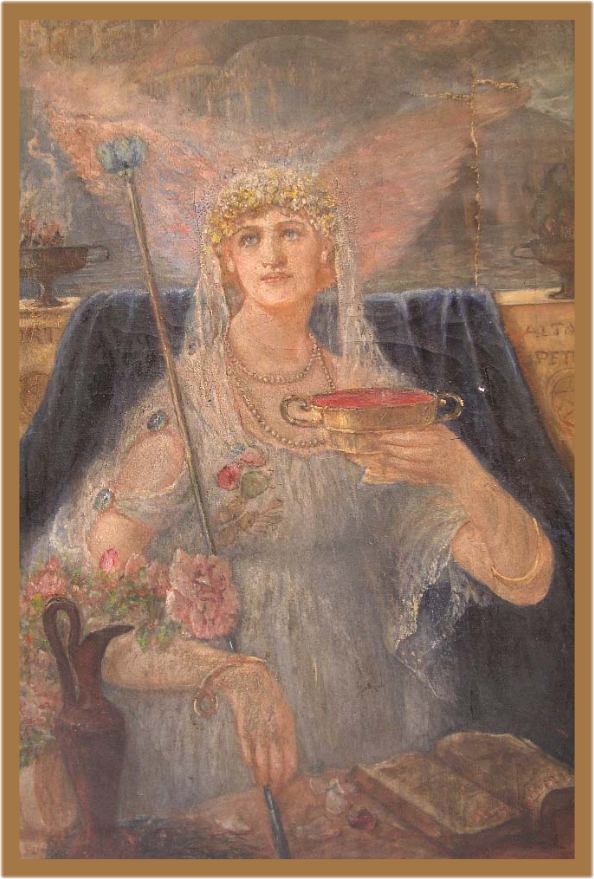
Castles in the Air c.1925 – Isabelle de Steiger
IMAGE LINKED: wikimedia Attribution 4.0 International (CC BY 4.0)
Andrew Cattanach died in 1939, and Albert Smythe contributed an obituary to his old friend in the Canadian Theosophymagazine. He wrote:
His regard for Freemasonry grew with his studies of theosophy and he found in Masonry confirmation of all the occultism he had learned from theosophy.
Article by: Kenneth C. Jack
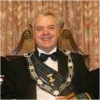
Kenneth C. Jack FPS is an enthusiastic Masonic researcher/writer from Highland Perthshire in Scotland.
He is Past Master of a Craft Lodge, Past First Principal of a Royal Arch Chapter, Past Most-Wise Sovereign of a Sovereign Chapter of Princes Rose Croix.
He has been extensively published in various Masonic periodicals throughout the world including: The Ashlar, The Square, The Scottish Rite Journal, Masonic Magazine, Philalethes Journal, and the annual transactions of various Masonic bodies.
Kenneth is a Fellow of the Philalethes Society, a highly prestigious Masonic research body based in the USA.

The Golden Dawn: The Original Account of the Teachings, Rites, and Ceremonies of the Hermetic Order
By: Israel Regardie and john Michael Greer
First published in 1937, Israel Regardie’s The Golden Dawn has become the most influential modern handbook of magical theory and practice. In this new, definitive edition, noted scholar John Michael Greer has taken this essential resource back to its original, authentic form. With added illustrations, a twenty-page color insert, additional original material, and refreshed design and typography, this powerful work returns to its true stature as a modern masterpiece.
An essential textbook for students of the occult, The Golden Dawn includes occult symbolism and Qabalistic philosophy, training methods for developing magical and clairvoyant powers, rituals that summon and banish spiritual potencies, secrets of making and consecrating magical tools, and much more.

The Secret Doctrine: The Classic Work, Abridged and Annotated
By: H.P. Blavatsky and Michael Gomes
The Secret Doctrine, Helena Petrovna Blavatsky’s masterwork on the origin and evolution of the universe and humanity itself, is arguably the most famous, and perhaps the most influential, occult book ever written. Published since 1888 only in expensive, two-volume editions of some 1,400 pages, it has long eluded the grasp of modern readers- until now.
This single-volume edition, abridged and annotated by historian and Theosophical scholar Michael Gomes, places the ideas of The Secret Doctrine within reach of all who are curious. In particular, Gomes provides a critical sounding of the book’s famous stanzas on the genesis of life and the cosmos- mysterious passages that Blavatsky said originated from a primeval source and which form the heart of The Secret Doctrine. Gomes scrupulously scales down the book’s key writings on symbolism to their essentials, and offers notes and a glossary to illuminate arcane references. His historical and literary introduction casts new light on some of the book’s sources and on the career of its brilliant and elusive author, one of the most intriguing personages of the nineteenth century.
At once compact and representative of the work as a whole, this new edition of The Secret Doctrinebrings unprecedented accessibility to the key esoteric classic of the modern era.

Women of the Golden Dawn: Rebels and Priestesses:
By: Mary K. Greer
These four remarkable women, Maud Gonne, Moina Bergson Mathers, Annie Horniman, Florence Farr, core members of the Hermetic Order of the Golden Dawn, left a lasting imprint on the politics, literature, and theater of 19th-century Europe. Less well-known than the famous men in their lives, including Yeats and Shaw, their stories are now told.

Baha’i Basics: A Guide to the Beliefs, Practices, and History of the Baha’i Faith
By: Frances Worthington
Revised edition. Now includes updated information, more questions, and an index. What is the Baha’i Faith? What are its basic principles and teachings? When and where did it begin? What does it have in common with the other major religions of the world? How is it different? Who was its Founder? What does the Baha’i global community look like today? In Baha’i Basics, author Frances Worthington uses a simple and accessible format that highlights the clarity with which topics associated with the Baha’i Faith are discussed. The result is an easy-to-use, informational introduction to what is one of the fastest growing religions in the world. Readers will find themselves well-informed after reading this concise, well-organized book, which provide clear, straightforward answers to the basic questions that arise when investigating a new religion.
Recent Articles: Kenneth C. Jack
 Observations on the History of Masonic Research Archaeology is often associated with uncovering ancient tombs and fossilized remains, but it goes beyond that. In a Masonic context, archaeology can be used to study and analyze the material culture of Freemasonry, providing insight into its history and development. This article will explore the emergence and evolution of Masonic research, shedding light on the challenges faced by this ancient society in the modern world. |
 Anthony O'Neal Haye – Freemason, Poet, Author and Magus Discover the untold story of Anthony O’Neal Haye, a revered Scottish Freemason and Poet Laureate of Lodge Canongate Kilwinning No. 2 in Edinburgh. Beyond his Masonic achievements, Haye was a prolific author, delving deep into the history of the Knights Templar and leaving an indelible mark on Scottish Freemasonry. Dive into the life of a man who, despite his humble beginnings, rose to prominence in both Masonic and literary circles, leaving a legacy that continues to inspire. |
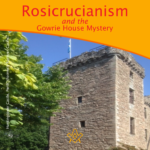 Rosicrucianism and the Gowrie House Mystery Unearth the mystifying intersections of Rosicrucianism and the infamous Gowrie House Mystery. Dive into speculative claims of sacred knowledge, royal theft, and a Masonic conspiracy, harking back to a fateful day in 1600. As we delve into this enthralling enigma, we challenge everything you thought you knew about this historical thriller. A paper by Kenneth Jack |
 Thomas Telford's Masonic Bridge of Dunkeld Of course, there is no such thing as a ‘Masonic Bridge’; but if any bridge is deserving of such an epithet, then the Bridge of Dunkeld is surely it. Designed by Scotsman Thomas Telford, one of the most famous Freemasons in history. |
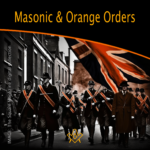 The masonic and orange orders: fraternal twins or public misperception? “Who’s the Mason in the black?” |
 Kenneth Jack's research reveals James Murray, 2nd Duke of Atholl – the 'lost Grand Master' |
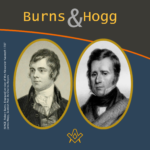 An Oration delivered to the Annual Burns and Hogg Festival, at Lodge Canongate Kilwinning, No. 2, Edinburgh, on 24 January 2018. By Bro. Kenneth C. Jack, FSAScot FPS, Past Master, Lodge St. Andrew, No. 814, Pitlochry. |
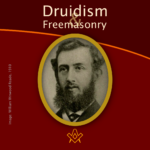 William Winwood Reade was a Scottish philosopher, historian, anthropologist, and explorer born in Crieff, Perthshire, Scotland. The following article by Kenneth Jack, provides some hints that William may have been a Freemason, but there is presently no definitive evidence he was. |
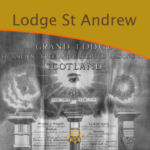 What's in a name? A brief history of the first Scottish Lodge in Australia - By Brother Kenneth C. Jack, Past Master, Lodge St. Andrew, No. 814, Pitlochry |
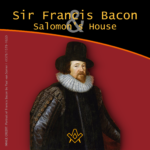 Sir Francis Bacon and Salomon’s House Does Sir Francis Bacon's book "The New Atlantis" indicate that he was a Rosicrucian, and most likely a Freemason too? Article by Kenneth Jack |
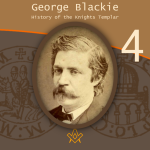 George Blackie – The History of the Knights Templar P.4 The final part in the serialisation of George Blackie's 'History of the Knights Templar and the Sublime Teachings of the Order' transcribed by Kenneth Jack. |
 George Blackie – The History of the Knights Templar P.3 Third part in the serialisation of George Blackie's 'History of the Knights Templar and the Sublime Teachings of the Order' transcribed by Kenneth Jack. |
 George Blackie – The History of the Knights Templar P.2 Second part in the serialisation of George Blackie's 'History of the Knights Templar and the Sublime Teachings of the Order' transcribed by Kenneth Jack. |
 George Blackie – The History of the Knights Templar P.1 First part in the serialisation of George Blackie's History of the Knights Templar and the Sublime Teachings of the Order – by Kenneth Jack |
 Little known as a Freemason, Bro Dr Robert ‘The Bulldog’ Irvine remains a Scottish rugby legend, and his feat of appearing in 10 consecutive international matches against England has only been surpassed once in 140 years by Sandy Carmichael. |
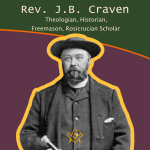 Rev. J.B. Craven: Theologian, Historian, Freemason, And Rosicrucian Scholar Archdeacon James Brown Craven is one of those unsung heroes of Scottish Freemasonry about whom very little has been previously written – here Kenneth Jack explores the life and works of this remarkable esoteric Christian. |
 Discover the powerful family of William Schaw, known as the 'Father of Freemasonry' |
 This month, Kenneth Jack invites us to look at the life of Sir William Peck; - astronomer, Freemason and inventor of the world's first electric car. A truly fascinating life story. |
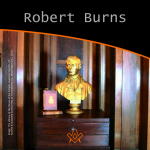 A Tribute to Scotland's Bard – The William Robertson Smith Collection With Burns' Night approaching, we pay tribute to Scotland's most famous Bard – The William Robertson Smith Collection |
 The Joy of Masonic Book Collecting Book purchasing and collecting is a great joy in its own right, but when a little extra something reveals itself on purchase; particularly with regards to older, rarer titles.. |
 Masons, Magus', and Monks of St Giles - who were the Birrell family of Scottish Freemasonry? |
 The 6th Duke of Atholl - Chieftain, Grand Master, and a Memorial to Remember In 1865, why did over 500 Scottish Freemasons climb a hill in Perthshire carrying working tools, corn, oil and wine? Author Kenneth Jack retraces their steps, and reveals all. |
 Charles Mackay: Freemason, Journalist, Writer Kenneth Jack looks at life of Bro Charles Mackay: Freemason, Journalist, Writer, Poet; and Author of ‘Tubal Cain’. |
 A Mother Lodge and a Connection Uncovered, a claim that Sir Robert Moray was the first speculative Freemason to be initiated on English soil. |
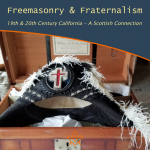 What is it that connects a very old, well-known Crieff family, with a former President of the United States of America? |
 The life of Bro. Cattanach, a theosophist occultist and Scottish Freemason |
 The Mysterious Walled Garden of Edzell Castle Explore the mysterious walled garden steeped in Freemasonry, Rosicrucianism, and Hermeticism. |
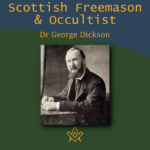 Dr. George Dickson: Scottish Freemason and Occultist Bro. Kenneth explores the life of Dr George Dickson a Scottish Freemason and Occultist |
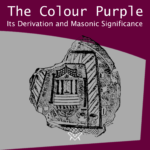 The Colour Purple - Its Derivation and Masonic Significance What is the colour purple with regards to Freemasonry? The colour is certainly significant within the Royal Arch series of degrees being emblematical of Union. |
 Bridging the Mainstream and the Fringe Edward MacBean bridging mainstream Freemasonry with the fringe esoteric branches of Freemasonry |
 Freemasonry in the Works of John Steinbeck We examine Freemasonry in the Works of John Steinbeck |
 Renegade Scottish Freemason - John Crombie Who was John Crombie and why was he a 'renegade'? |
 Scottish Witchcraft And The Third Degree How is Witchcraft connected to the Scottish Third Degree |
masonic knowledge
to be a better citizen of the world
share the square with two brothers

click image to open email app on mobile device








